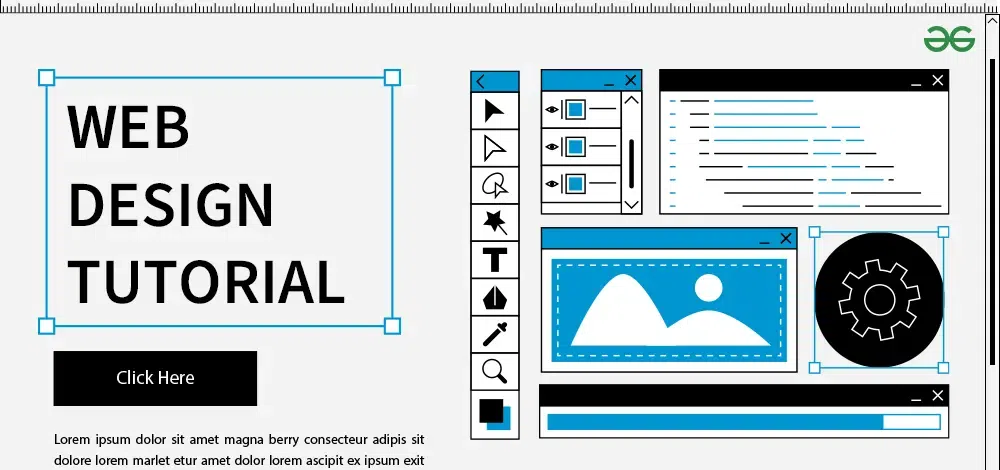Creating a Mobile-Optimized Website with Expert Web Design Techniques
Creating a Mobile-Optimized Website with Expert Web Design Techniques
Blog Article
Understanding Individual Experience: Secret Concepts for Effective Web Style
In the realm of web style, recognizing individual experience (UX) is vital to creating platforms that not only attract yet also maintain users. Key principles such as user-friendly navigating and effective feedback devices play vital functions in fostering customer contentment. Additionally, considerations for access guarantee that all individuals can engage with the content flawlessly.
Relevance of User Experience

In the world of website design, one can not ignore the importance of customer experience (UX) as a critical component that directly affects the success of an internet site. A favorable UX not only boosts user complete satisfaction yet likewise promotes commitment, motivating repeat sees and communications. When users come across a intuitive and interesting user interface, they are more probable to check out the web content, exchange clients, or share their experiences with others. This natural promotion can significantly enhance a brand's reach and presence.
Additionally, the significance of UX extends past simple looks. It encompasses the overall functionality of a website, ensuring that navigation is seamless and info is quickly available. Web sites that focus on UX are usually perceived as more credible and reliable, which can have a profound influence on conversion rates. On the other hand, bad UX can result in frustration, causing high bounce rates and lost opportunities.
Inevitably, buying user experience is not simply a design option; it is a calculated decision that can differentiate a brand name in a jampacked industry. By concentrating on UX, companies can create purposeful interactions that resonate with users, leading the way for sustained success in the electronic landscape.
Use Principles
Effective website design depends upon the application of crucial usability concepts that make sure a site is both user-friendly and functional. Central to these concepts is the principle of intuition, where individuals can navigate the website easily without considerable guideline. Clear navigation structures, consisting of constant designs and well-labeled food selections, improve this user-friendly experience, enabling users to find details promptly.

Uniformity is equally crucial; maintaining harmony in style elements, terminology, and procedures throughout the website aids to decrease complication. Individuals should not need to relearn exactly how to engage with different sections of the site.
In addition, error prevention and healing are necessary for use. Websites should be developed to lessen the opportunity of individual errors, and when errors take place, useful and clear error messages must lead users towards resolution.
Availability Considerations
Guaranteeing access in web layout is critical for developing comprehensive digital experiences that cater to all users, consisting of those with impairments. Accessibility considerations entail creating internet sites that suit diverse requirements, allowing users with visual, acoustic, cognitive, or electric motor problems to browse and communicate efficiently.
To attain this, internet developers need to follow developed guidelines, such as the Internet Content Access Standards (WCAG) These standards provide a structure for making content perceivable, operable, reasonable, and durable. Trick methods consist of guaranteeing adequate shade comparison, offering text alternatives for non-text content, and making sure keyboard navigability.
In addition, semantic HTML should be utilized to boost display reader compatibility, enabling users with visual disabilities to comprehend the framework and meaning of material without effort. web design. Offering clear, succinct guidelines and using straightforward language can even more enhance usability for people with cognitive handicaps
Normal availability screening, including genuine individuals with handicaps, is necessary to look at here now determine barriers and boost the customer experience. By focusing on accessibility, internet developers not only abide by lawful criteria however likewise cultivate a more fair digital landscape, ultimately profiting every person via enhanced use and engagement.
Visual Style Elements
A myriad of aesthetic style aspects plays an important role in shaping individual perceptions and experiences on a web site. These elements consist of color pattern, typography, imagery, whitespace, and format, each contributing to the general visual charm and effectiveness of a website.

Shade schemes evoke feelings and can influence individual activities; for example, warm shades may create a feeling of necessity, while great colors typically promote calmness. Typography, on the various other hand, affects readability and can develop a brand name's individuality - web design. The option of font design and dimension need to align with the site's purposes and target audience
Imagery, including symbols and pictures, improves narration and can dramatically affect customer interaction. Premium visuals create a feeling of professionalism and trust, while poor-quality images might interfere with the user experience.
Layout and whitespace are similarly vital, as they guide individuals with the content. A well-structured format helps customers find details quickly, while ample whitespace stops mess, helping with a much more pleasurable browsing experience.

Testing and Iteration
Individual testing and iteration are basic parts of a successful web layout process. These methods enable developers to gather valuable responses from actual customers, guaranteeing that the final product meets their needs and expectations. User screening includes observing how real customers engage with a site, identifying functionality problems, and comprehending individual habits. This straight responses is vital in exposing pain factors that might not be obvious throughout the design phase.
Iteration, on the various other hand, is the procedure of improving the layout based on the understandings gained from user testing. By making step-by-step read this post here changes and re-evaluating the style, teams can enhance functionality, enhance looks, and enhance customer involvement. This cyclical technique fosters a culture of constant improvement, allowing developers to adapt to individual needs and emerging patterns properly.
Furthermore, incorporating both individual testing and model right into the style procedure causes more informed decision-making and eventually causes a more user-centered product. By accepting these principles, internet designers can produce a lot more user-friendly, interesting, and reliable experiences that reverberate with their target market, inevitably driving greater individual complete satisfaction and retention.
Verdict
In final thought, customer experience is a crucial part of reliable web style, including functionality, availability, and visual considerations. Constant screening and iteration serve as essential processes for determining and resolving user pain factors, ensuring that internet layouts stay adaptable to progressing demands.
In the world of internet style, understanding customer experience (UX) is extremely important to creating systems that not only attract however additionally retain customers.In the world of web style, one can not take too go to this website lightly the relevance of user experience (UX) as a critical element that straight influences the success of a site. Customer screening includes observing how real customers connect with a website, identifying use concerns, and understanding individual habits.In final thought, individual experience is a critical element of efficient web design, including use, access, and visual considerations. Constant screening and version serve as vital processes for resolving and recognizing user pain factors, making certain that internet styles continue to be adaptable to developing needs.
Report this page